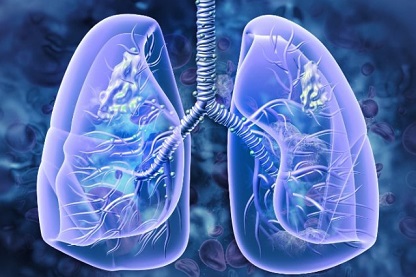COVID-19 News: Lingering Breathing Difficulties Following COVID-19 Are Due To Impaired Function In The Lung Periphery
Nikhil Prasad Fact checked by:Thailand Medical News Team Jan 27, 2024 1 year, 2 months, 4 weeks, 2 days, 13 hours, 36 minutes ago
COVID-19 News: As the world grappled with the impact of the COVID-19 pandemic, it became increasingly apparent that the aftermath of the virus brought its own set of challenges for survivors. Lingering respiratory symptoms, particularly breathing difficulties, have emerged as persistent issues affecting individuals long after the acute phase of the infection. Researchers from the University of Gothenburg in Sweden undertook a comprehensive study to delve into the intricacies of post-COVID-19 respiratory complications. Their findings covered in this
COVID-19 News report shed light on the role of small airway dysfunction (SAD) as a significant contributor to the persistence of breathing difficulties in these individuals.
 Lingering Breathing Difficulties Following COVID-19 Are Due To
Lingering Breathing Difficulties Following COVID-19 Are Due To
Impaired Function In The Lung Periphery
Background
Previous studies predominantly focused on utilizing spirometry to assess lung function, primarily targeting large to mid-size airways. However, a recurring observation was that spirometry often yielded normal results, even in cases where severe pneumonia findings were evident on computed tomography (CT). This led researchers to question whether the focus on larger airways was comprehensive enough to explain the lingering respiratory symptoms experienced by COVID-19 survivors.
In the acute phase of severe COVID-19, postmortem examinations revealed a reduction in alveolar type II cells, signifying damage to the peripheral lung function. The virus's impact on lung epithelial and endothelial cells contributed to the impairment of peripheral lung function, affecting the alveolar-capillary membrane's ability for efficient gas exchange.
Objective of the Study
The primary goal of the study conducted by the University of Gothenburg was to investigate the role of small airway dysfunction in individuals experiencing persistent breathing difficulties following COVID-19. The research focused on a cohort of 48 individuals who reported dyspnea and/or cough during either the acute phase or aftermath of COVID-19, along with a control group of 22 non-COVID-19 individuals. A range of lung function tests, including spirometry, diffusing-capacity tests, multiple breath washout (MBW), and impulse oscillometry (IOS), were conducted. Physical function was also assessed using the one-minute sit-to-stand test.
Key Findings of the Study
Despite spirometry and diffusing-capacity tests showing normal results in almost all post-COVID-19 individuals, the study identified ventilation inhomogeneity in 50% of cases using MBW. Small airway dysfunction (SAD), assessed through MBW and IOS, was notably present in a significant proportion of individuals reporting breathing difficulties. Lingering breathing difficulties were reported by 44% of participants, underlining the prevalence of persistent symptoms.
The study further categorized subgroups within those experiencing breathing difficulties. Of the participants, 25% had reduced physical function, 25% exhibited SAD,
35% experienced both, and 15% displayed normal lung function and physical function. This nuanced categorization highlighted the diverse etiologies contributing to breathing difficulties post-COVID-19.
Implications and Significance
The study's findings have several implications for our understanding of post-COVID-19 respiratory complications. Traditional lung function tests, such as spirometry and diffusing-capacity assessments, may not be sensitive enough to detect small airway dysfunction, a crucial factor contributing to lingering respiratory symptoms. Ventilation distribution in the acinar airways, as assessed through MBW, emerged as a key indicator of disturbance in individuals with breathing difficulties.
The study's outcomes underscore the importance of adopting more comprehensive diagnostic methods to accurately identify the varied causes of breathing difficulties post-COVID-19. It calls for a shift in the approach towards evaluating small airway function to ensure a more nuanced understanding of the complex respiratory challenges faced by survivors.
Conclusion and Future Implications
In conclusion, the study conducted by the University of Gothenburg provides valuable insights into the intricate relationship between small airway dysfunction and lingering breathing difficulties following COVID-19. The emphasis on assessing ventilation distribution in the small airways through MBW has unraveled a previously overlooked aspect of post-COVID-19 respiratory complications.
Moving forward, the study advocates for a more longitudinal approach to understanding the long-term implications of small airway dysfunction. It prompts further research to explore the clinical relevance of SAD in individuals without apparent respiratory symptoms. The need for individualized diagnostic and treatment strategies is paramount, considering the diverse etiologies contributing to breathing difficulties post-COVID-19.
As the world continues to grapple with the consequences of the pandemic, the insights gained from this study pave the way for a more comprehensive understanding of post-COVID-19 respiratory health. The findings underscore the importance of ongoing research and the development of tailored interventions to address the diverse challenges faced by survivors seeking to regain optimal respiratory function.
The study findings were published in the peer reviewed journal: Physiological Reports.
https://physoc.onlinelibrary.wiley.com/doi/10.14814/phy2.15918
For the latest
COVID-19 News, keep on logging to Thailand Medical News.
